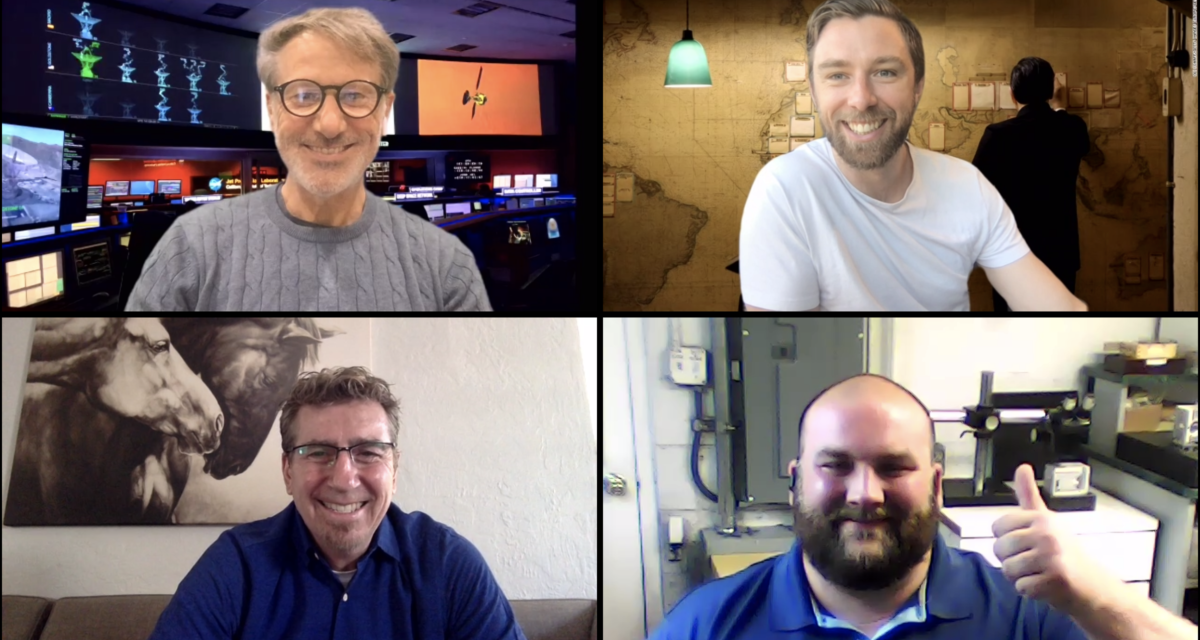The Supply Chain Bunker Debrief (Episode #6) – Made in the USA and Globalization

By Dave Evans, Fictiv CEO
Now on many people’s weekly schedule, the Supply Chain Bunker continues to offer a platform for collaboration and the exchange of ideas and experiences, and a space to meet to discuss challenges as they occur. And there are plenty!
As the COVID-19 crisis disrupts the world of manufacturing and supply chain, it challenges our perception of globalization. Governments around the world are acting to reduce dependency on China, with a bill in the United States and Japan providing billions in incentives to move supply chains. What does that mean for manufacturing, and what could a post-COVID new world order look like?
In this week’s Bunker, two expert guests from the CNC and Product Development and Prototyping world, Danny Yorke and Gregg Miner, joined Philip and me to explore manufacturing in the U.S. and discuss what a shorter, more regionalized supply chain might look like. It was a joy to explore the huge breadth and depth of manufacturing expertise available in the U.S. with two guests with so much experience and passion for manufacturing.
- Danny Yorke is Manufacturing Manager of Yorke Precision, a business that he manages with his brother Brian. Brian is skilled in sales, marketing, business development, strategy/planning and, of course, machining. Danny has an MBA from CSU Monterey Bay. Under Brian and Danny’s leadership, Yorke Precision has increased sales every year and plans to expand to a larger location.
- Gregg Miner describes himself as a Maker, Breaker and Innovator. He is an expert in Product Development, Prototyping and Manufacturing. Gregg is driven to build great products through great design and engineering, working with cross-functional teams like sales and marketing, design, engineering and manufacturing to bring amazing ideas to market.
Before we began our conversation, my co-host, journalist Philip Stoten, shared some of the headlines that caught his eye this week:
- We are seeing more government intervention in the supply chain and in manufacturing, with the U.S. president signing a proclamation that suspended access to green cards for certain groups.
- Robots are doing more and more in the workplace and on the frontlines of the COVID-19 pandemic, with stories about robots that help get food on grocery store shelves; drones and AGVs being repurposed to disinfect or surveil public areas; and even Dr. Spot, the robot dog seeing COVID-19 patients at Boston’s Brigham and Women’s Hospital.
- One headline that caught my eye in Industry Week is “Technology Takes Center Stage As Manufacturers Pivot”. According to a recent survey, 49% of businesses are using robotics or automation to help frontline workers pivot to produce new products and cope with the production challenges associated with the COVID-19 crisis.
- Meanwhile, according to the Department of Labor’s Bureau of Labor Statistics, 4,427,000 people filed for unemployment insurance last week, and more than 26 million have filed for unemployment benefits since the coronavirus outbreak began closing businesses.
From our guests:
In the debate around globalization and a return to full U.S. manufacturing capacity, our panel agreed upon a few things. First, there is a demand to reduce manufacturing and supply chain dependency on China. Second, a resurgence in U.S. manufacturing and a more regionalized supply chain is desirable. Third, consumers and brands do not want to pay more. Finally, digital transformation and automation can level the playing field and reduce dependence on low-cost labor.
Both Danny and Gregg underlined the need to understand the total cost of ownership when selecting manufacturing geographies and partners. Many decision-makers look at price and do not factor in all the hidden costs around travel and liaison, not to mention the lost time, thanks to slower iteration cycles right now. Shorter supply chains, particularly during the launch, ramp and bridge phases of a product produce a lot of additional value that is often overlooked.
Danny explained that a Chinese machinist might cost as little as one eighteenth of the cost of a U.S. machinist, but thanks to automation and robotic handling systems, he can have a single machinist manage more than four CNC lathes. He is also able to do all the programming offline, freeing up machine and operator time, to deploy more effectively and on higher value projects. Danny’s team has been running 24/7 to help their customers deliver products in these challenging times.
Gregg agrees that automation can increase the volumes that can be practically and economically manufactured in the U.S., adding a note of caution against trying to build China in the U.S.
The panelists were all adamant that the single-minded and almost lemming-like rush to China has been counterproductive, and supply chain diversity is needed as a correction. In fact, on earnings calls, questions around moving manufacturing from China and creating supply chain agility and resilience are being regularly tabled.
One concern raised in the Bunker is that of skill shortages and how they could impact the ability to ramp production capacity in the U.S. and elsewhere fast enough. And capacity is a real issue. While we talk about shifting manufacturing from China, we should remember they have a capacity that is north of $4 trillion, and while we talk about other options like Vietnam, their $40 billion manufacturing capacity represents a mere 1% of China’s.
There is a lot more to this debate. The whole discussion was recorded and is worth an hour of anyone’s time. Check out the recording here.
Here are a few of the key takeaways from The Supply Chain Bunker, Episode #6:
- Craftsmanship and manufacturing expertise are alive and well in the U.S.
- Total cost of ownership is more important than price; learn how to calculate it.
- US manufacturing makes sense and is competitive in numbers up to 100,000
- Manufacturing has really rallied during the COVID-19 crisis.
- Don’t try to build China in the U.S.; build something better and future-proof.
- Do more of what you’re great at!
There’s a lot more to come in the Bunker. Please get involved and tell us what you’d like to know by reaching out on LinkedIn to Dave Evans or Philip Stoten. Last week’s Supply Chain Bunker is available to watch, or you can register for the weekly series once and drop in as often as you like.
See you soon in the Bunker…













